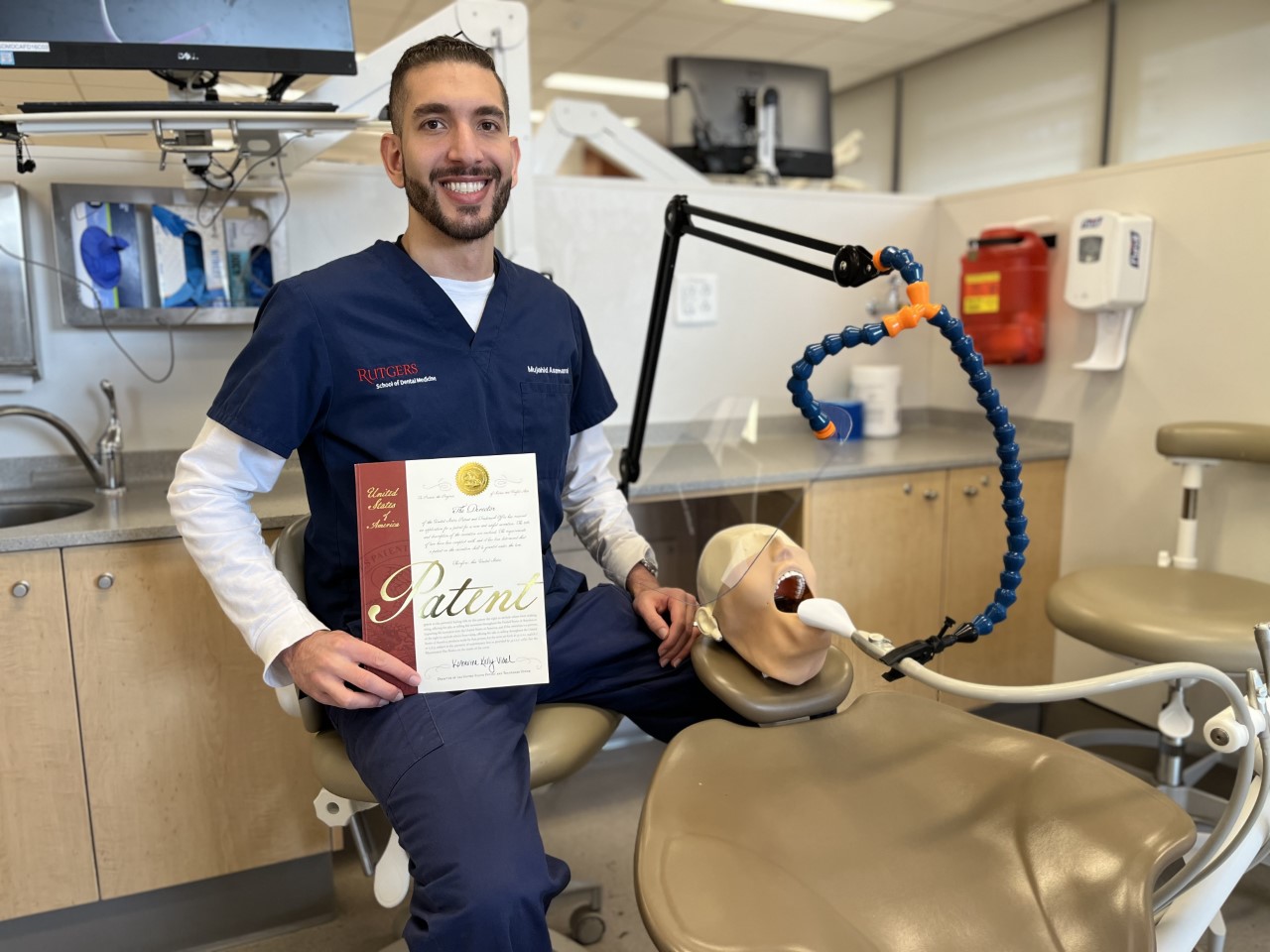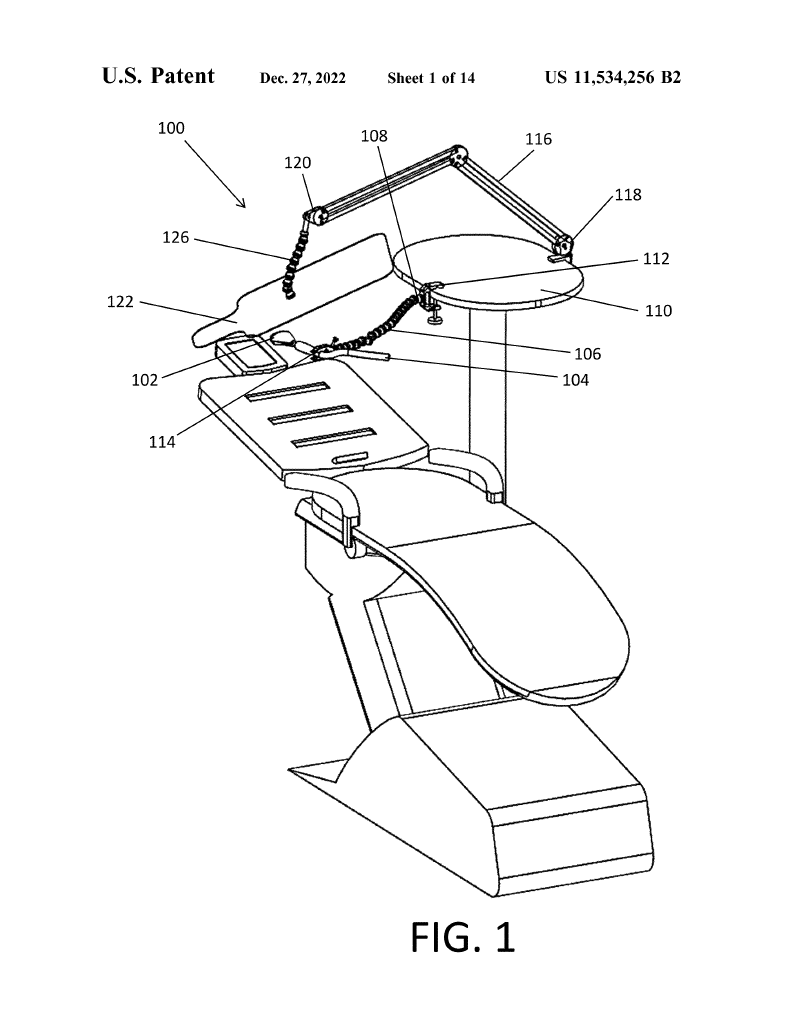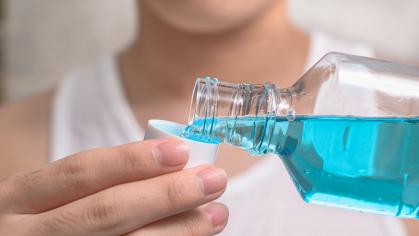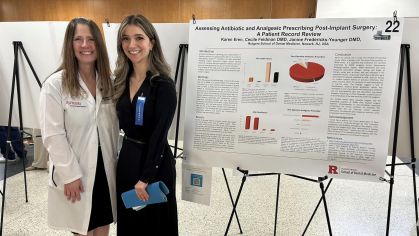First-year RSDM Student Gets Patent
A former mechanical engineer, Mujahid Asamarai ’26 is trained to solve problems. Knowing this, his brother Muath Asamarai, a dentist in Minnesota, turned to him when he needed help exploring ways to protect his patients and staff against COVID in his office. Mujahid Asamarai was up for the challenge.
 Mujahid Asamarai '26 with his design, Dental Aerosol Protection System, and patent award.
Mujahid Asamarai '26 with his design, Dental Aerosol Protection System, and patent award.
“[My brother] really wanted to make people feel safe,” said Asamarai, who flew out to assist on-site. At the time, it had just been a year since he quit his job as an engineer in a medical device company to shift careers, and he was immersed in a post-baccalaureate program in New Jersey, preparing for dental school.
That Minnesota trip led Asamarai to the most unexpected place: his first patent.
The brothers installed shields around the office and implemented fogging among other measures. However, the main concern was the aerosol produced by motorized instruments, like a dental drill and an ultrasonic scaler, as the aerosol can carry viruses and bacteria. To mitigate aerosol spread, the duo looked for a readily available product but couldn’t find anything suitable.
“That's when I thought this shouldn't be this hard,” said Asamarai. He began designing a solution in a computer-aided design (CAD) program. Next, he got off-the-shelf parts and printed the rest with his brother's 3D printer. Within a few weeks, he created the Dental Aerosol Protection System.
 Asamarai's design that he drew in the CAD program.
Asamarai's design that he drew in the CAD program.
The system, now patented by Asamarai, is twofold. First, an adjustable, self-balancing shield goes in between the patient and practitioner to block aerosols from the patient’s mouth. Second, a 3D-printed aerosol collection funnel, which can be plugged into a dental chair’s high-volume suction, sucks up the aerosols coming out of the patient’s mouth.
"It wasn't incredibly expensive and wasn’t invasive to the operatory, which was important for him,” said Asamarai. “It could be installed and removed without causing any damage to the operatory or dental chair.”
This simple yet crucial setup felt like any other solution that Asamarai found. “It just felt natural,” he said. “It was only until discussing with family that they said, ‘if nothing like it exists on the market, maybe you should consider patenting it.”
He took the advice and filed the patent, which was granted in December 2022. The Dental Aerosol Protection System is still in use at his brother’s office as well as a few other dental offices in New Jersey.
Asamarai's love of working with his hands was what led him to engineering, and the desire to help people was why he went into the medical device industry. But he yearned for the opportunity to work more with his hands and experience a more direct patient interaction.
Seeing this, his brother suggested he take a day off and see his day-to-day as a dentist. In the practice, Asamarai saw his brother use a CAD/CAM scanner and milling machine—both of which he was familiar with from engineering school—to prepare and deliver a same-day crown. “He was explaining to me the engineering, the design behind it, and I was blown away,” recalled Asamarai. “That really drew me into dentistry. After that, I gave it a few months of critical thought and decided to switch careers.”
Now he is a first-year student in RSDM’s DMD program. “I want to become an amazing dentist,” he said, “and I came to Rutgers because of its strong reputation of producing some of the best.”
He has already been learning a lot.
In his “Fixed Digital Prosthodontics” class, he was introduced to the Computerized Assessment Laboratory, where he could scan his own crown preps and assess them digitally. “It was very cool, and we're fortunate to get exposed to this technology this early,” he said. “I love digital dentistry and the innovative side of it. I want to always be on the cutting edge.”



